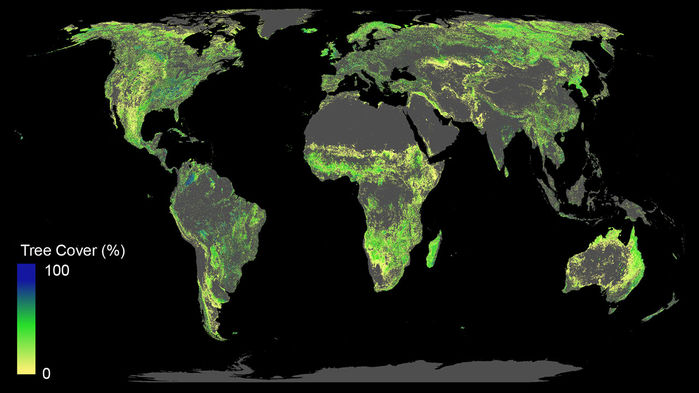HOW TREES COULD SAVE THE CLIMATE: “Our study shows clearly that forest restoration is the best climate change solution available today, and it provides hard evidence to justify the investment,” stated Professor Thomas Crowther, Swiss Federal Institute of Technology (July 2019)
Note to Reader:
The latest report from the United Nations’s Intergovernmental Panel on Climate Change recommended adding 1 billion hectares of forests to help limit global warming to 1.5° C by 2050. Ecologists Jean-Francois Bastin and Tom Crowther of the Swiss Federal Institute of Technology in Zurich and their co-authors wanted to figure out whether today’s Earth could support that many extra trees, and where they might all go.
The research by Bastin et al determined that earth could naturally support 0.9 billion hectares of additional forest—an area the size of the United States—without impinging on existing urban or agricultural lands. Those added trees could sequester 205 gigatons of carbon in the coming decades, roughly five times the amount emitted globally in 2018.
The 0.9 billion hectares of additional forest would translate to 1–1.5 trillion trees, adding to the 3 trillion trees on Earth already, the AP reports.

This is where the world could support new forests. The map excludes existing forests, urban areas, and agricultural lands. J. BASTIN, ET. AL., SCIENCE 365, 76, 2019
The Potential for Global Forest Cover
The restoration of forested land at a global scale could help capture atmospheric carbon and mitigate climate change. Bastin et al. used direct measurements of forest cover to generate a model of forest restoration potential across the globe.
Their spatially explicit maps show how much additional tree cover could exist outside of existing forests and agricultural and urban land. An additional 0.9 billion hectares of continuous forest would represent a greater than 25% increase in forested area, including more than 500 billion trees and more than 200 gigatonnes of additional carbon at maturity. Such a change has the potential to cut the atmospheric carbon pool by about 25%.
The study finds that more than half the potential to restore trees can be found in just six countries: Russia (151 million hectares); USA (103 million); Canada (78 million); Australia (58 million); Brazil (50 million); and China (40 million).
A Benchmark for Global Action
 “The restoration of trees remains among the most effective strategies for climate change mitigation, stated Dr. Jean Francois Bastin. “We mapped the global potential tree coverage to show that 4.4 billion hectares of canopy cover could exist under the current climate. Excluding existing trees and agricultural and urban areas, we found that there is room for an extra 0.9 billion hectares of canopy cover, which could store 205 gigatonnes of carbon in areas that would naturally support woodlands and forests.
“The restoration of trees remains among the most effective strategies for climate change mitigation, stated Dr. Jean Francois Bastin. “We mapped the global potential tree coverage to show that 4.4 billion hectares of canopy cover could exist under the current climate. Excluding existing trees and agricultural and urban areas, we found that there is room for an extra 0.9 billion hectares of canopy cover, which could store 205 gigatonnes of carbon in areas that would naturally support woodlands and forests.
“This highlights global tree restoration as our most effective climate change solution to date. However, climate change will alter this potential tree coverage. We estimate that if we cannot deviate from the current trajectory, the global potential canopy cover may shrink by ~223 million hectares by 2050, with the vast majority of losses occurring in the tropics.
“Our study provides a benchmark for a global action plan, showing where new forests can be restored around the globe. Action is urgent, and governments must now factor this into their national strategies to tackle climate change.”
The Best Available Solution
 “We all knew that restoring forests could play a part in tackling climate change but we didn’t really know how big the impact would be,” said Thomas Crowther, the study’s senior author and an assistant professor of ecology at the Swiss Federal Institute of Technology, Zurich.
“We all knew that restoring forests could play a part in tackling climate change but we didn’t really know how big the impact would be,” said Thomas Crowther, the study’s senior author and an assistant professor of ecology at the Swiss Federal Institute of Technology, Zurich.
“Our study shows clearly that forest restoration is the best climate change solution available today. But we must act quickly, as new forests will take decades to mature and achieve their full potential as a source of natural carbon storage.”
To Learn More:
Download the press release on How trees could save the climate
Read Adding 1 billion hectares of forest could help check global warming
Download a copy of Planting 1 billion hectares of forest could help check global warming


